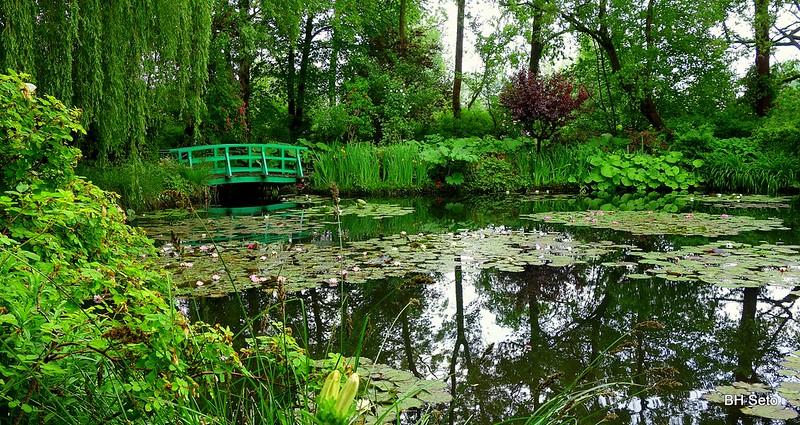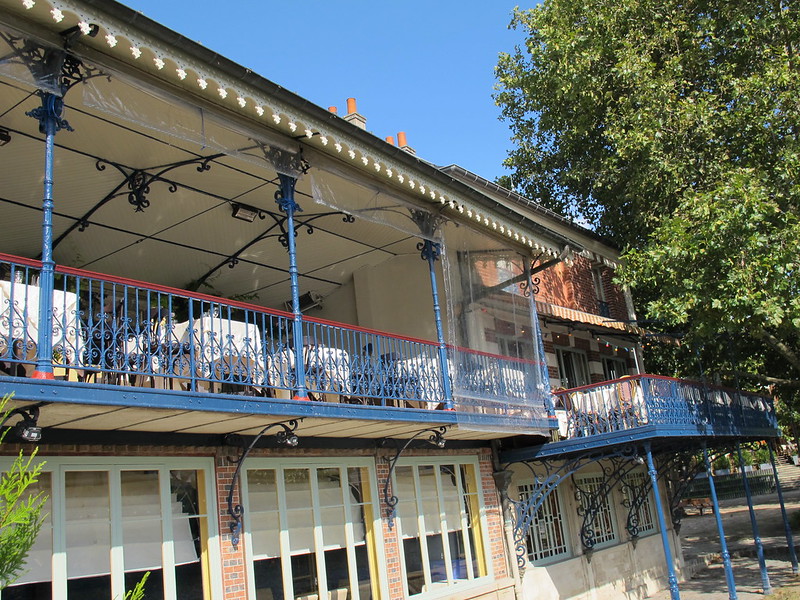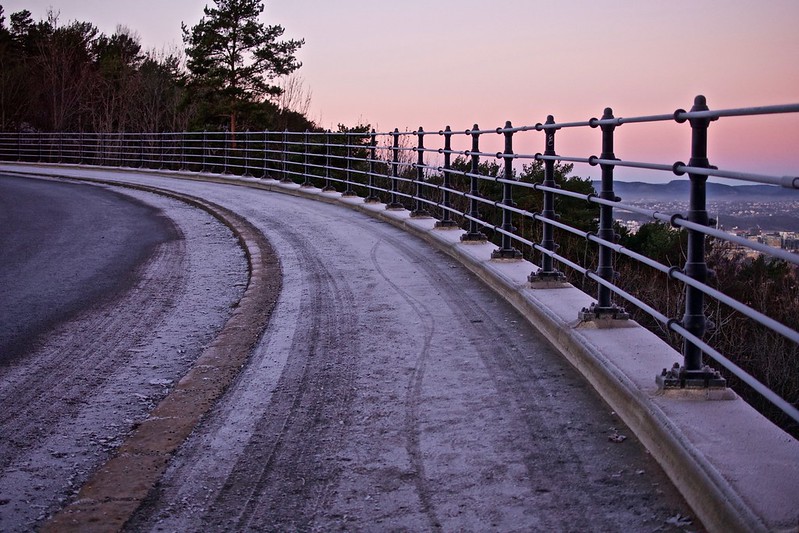Monet's Garden in Giverny (The Water Lilies and Japanese Bridge Series by Claude Monet)
Impressionist Claude Monet moved to a house in Giverny, a commune in northern France, in 1883. It is here that the Impressionist artist created and cultivated his “most beautiful masterpiece”: a Japanese-inspired garden.
Featuring weeping willow trees, year-round blooms, and an aquatic-flower pond as its centerpiece, this manicured plot of land inspired some of Monet's most famous series, including the 250-piece Water Lilies and 12 paintings of his green Japanese footbridge. “I work at my garden all the time and with love,” Monet famously said. “What I need most are flowers, always. My heart is forever in Giverny.”
Today, the artist's beloved garden—as well as his home, decorated with an impressive collection of Japanese woodblock prints—is a popular tourist destination, boasting over 500,000 visitors each year.
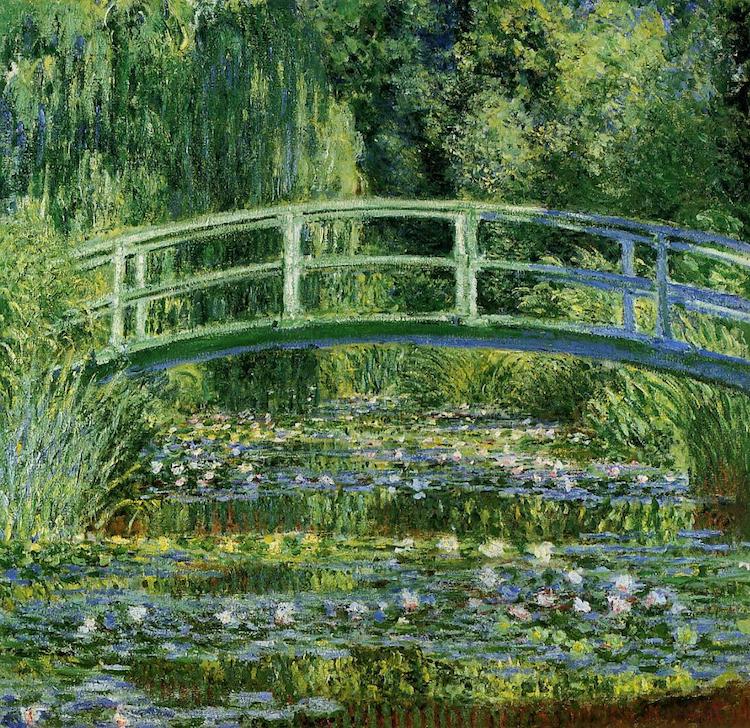
Claude Monet, “Water Lilies and Japanese Bridge” (ca. 1897 and 1899) (Photo: The Athenaeum via Wikimedia Commons Public Domain)
The Palace of Westminster (Houses of Parliament Series by Claude Monet)
During his time in Giverny, Monet made frequent trips to London. Here, he painted 25 studies of the Palace of Westminster that experimentally explored the sky's changing color and its consequent reflections on the River Thames—an artistic task that proved to be his “day-long obsession, joy, and torment.”
Monet is believed to have completed these pieces from a second-floor terrace of St. Thomas Hospital. While viewing the glistening Houses of Parliament from this exact location may prove difficult today, a stroll along the river's banks and bridges offers nearly identical views.

Claude Monet, “The Houses of Parliament, Sunset” (1903) (Photo: Postdlf via Wikimedia Commons Public Domain)

Parliament at sunset (Photo: poludziber via Shutterstock)
Maison Fournaise (Luncheon of the Boating Party by Pierre-Auguste Renoir)
Luncheon of the Boating Party is one of Pierre-Auguste Renoir's most famous works. Initially exhibited at the Seventh Impressionist Exhibition in 1882, the large-scale painting has been praised for centuries, making its setting—the Maison Fournaise, a restaurant on Chatou Island—a popular destination for dedicated fans of Impressionism.
Situated just outside of Paris, the Maison Fournaise offered boat rentals and scenic dining in the late 19th century. During this time, Renoir and other French painters regularly visited the establishment, as evident in the Luncheon of the Boating Party.
While the restaurant closed its doors in 1906, it reopened in 1990. Today, Maison Fournaise remains in business, inviting you to “relive the Impressionist joys” as you dine on its famous riverside balcony.

Pierre-Auguste Renoir “Luncheon of the Boating Party” (1880-1881) (Photo: The Phillips Collection via Google Arts & Culture Public Domain)
Valhallvegen Road (The Scream Series by Edvard Munch)
From 1893 through 1910, Norwegian printmaker and painter Edvard Munch created his well-known series, The Scream. Composed of four works on cardboard and board, this collection stars a shrieking figure as its subject. While medium, color palette, and attention to detail vary from piece-to-piece, each features the same setting: a bridge spanning a blue body of water, set against a dusky sky.
This now-famous scenery was inspired by one of Munch's sunset strolls, as he described in his diary: “One evening I was walking along a path, the city was on one side and the fjord below. I felt tired and ill. I stopped and looked out over the fjord—the sun was setting, and the clouds turning blood red. I sensed a scream passing through nature; it seemed to me that I heard the scream. I painted this picture, painted the clouds as actual blood. The color shrieked. This became The Scream.”
The path described by Munch is believed to be Valhallvegen Road, an overlook situated on Oslo's Ekeberg Hill.
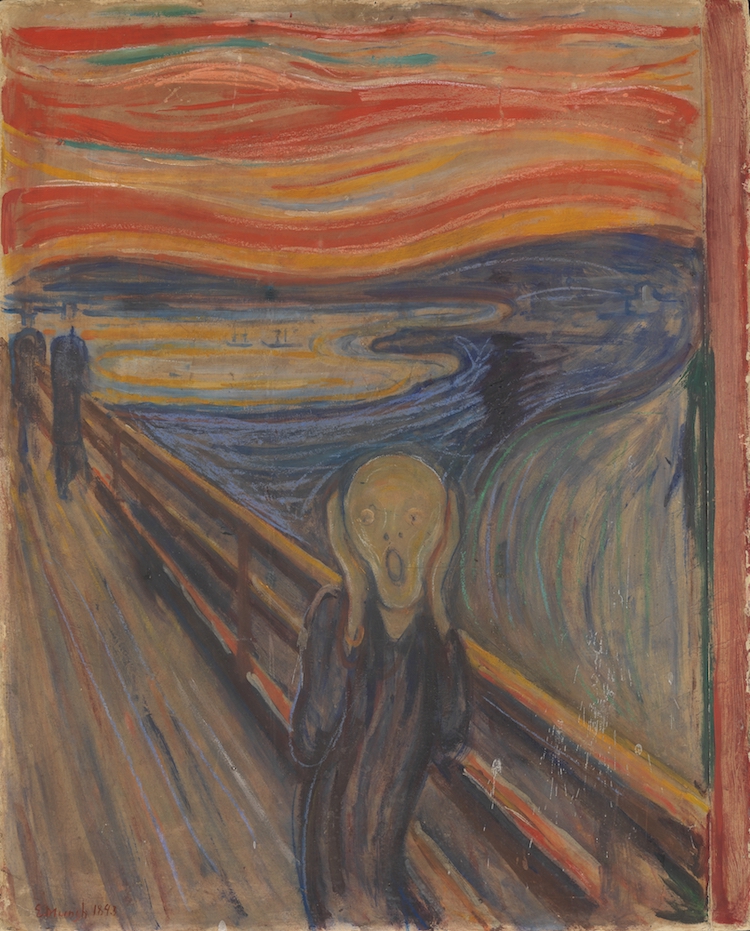
Edvard Munch, “The Scream” (1893) (Photo: National Gallery of Norway via Wikimedia Commons Public Domain)
Dibble House (American Gothic by Grant Wood)
In 1930, artist Grant Wood painted American Gothic, one of the most recognizable modernist works.
The piece shows a morose man and woman standing before a small, white, and “very paintable” house with an eye-catching neo-Gothic window. While believed by many to be a couple (namely, a farmer and his wife), the figures are actually modeled after Wood's sister and dentist.
Today, fans of the painting can visit the Dibble House (a name inspired by the quaint cottage's first owner, Charles Dibble), which is listed on the National Register of Historic Places. Located in Eldon, Iowa, the house now has a museum and visitor center, which even provides props for American Gothic-inspired photo shoots!

Grant Wood, “American Gothic” (1930) (Photo: Google Arts & Culture via Wikimedia Commons Public Domain)
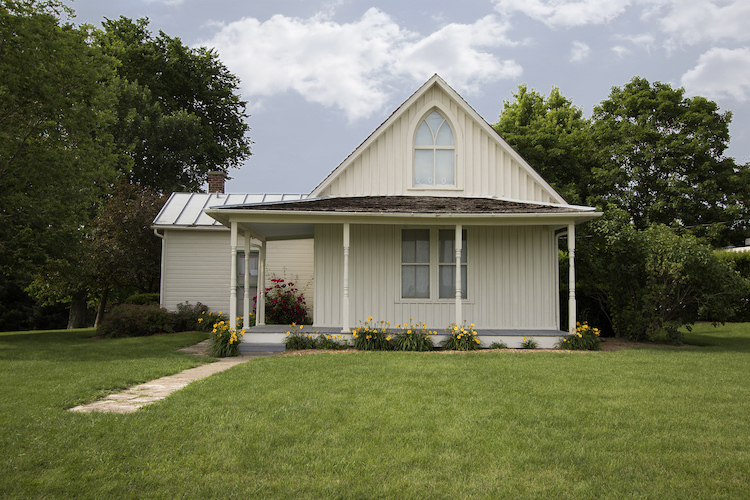
American Gothic house in Eldon, Iowa (Photo: Scott Cornell via Shutterstock)
Related Articles:
8 Iconic Artists and the Inspiration Behind Their Favorite Subjects
Fascinating Paintings Reveal the Unique Studios of 5 Famous Artists
20 Art History Terms to Help You Skillfully Describe a Work of Art
